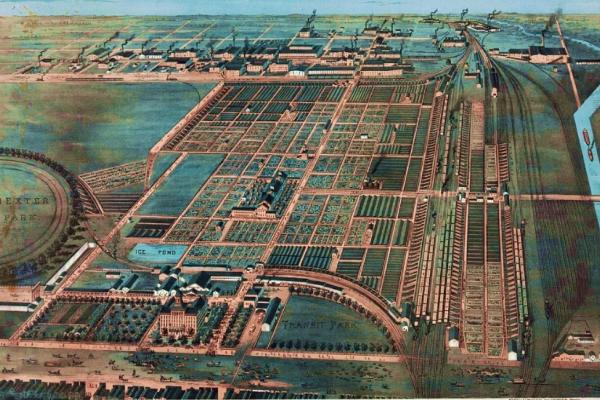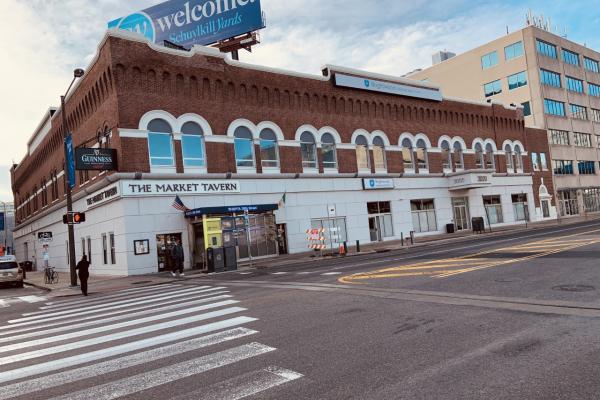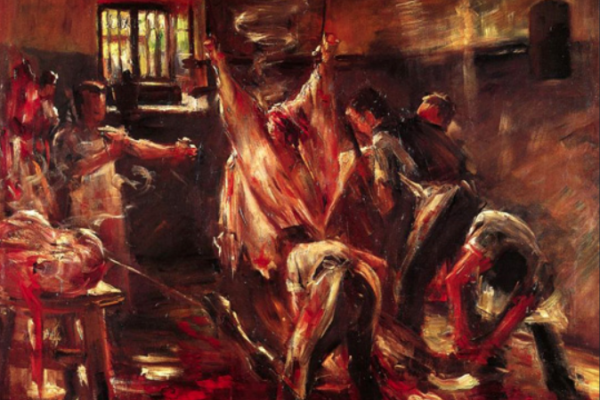Wilson Bros. & Co.’s exquisitely designed abattoir (slaughterhouse); located on the west bank of the Schuylkill; built ca. 1877 by the Pennsylvania Railroad and operated by the Philadelphia Stock-Yard Co.
The last quarter of the nineteenth century saw the development of licensed centralized slaughterhouse operations on the west bank of the Schuylkill, both on and near the present site of Amtrak’s 30th St. Station.
In the last quarter of the nineteenth century, West Philadelphia saw the centralization of its slaughterhouse industry in two neighboring locations above the Schuylkill, one west of Market Street—the Pennsylvania Railroad/Philadelphia Stock-Yard Co. animal-holding pens and abattoir; the other (a later development) on the east side of Market—D.M. Martin Co.’s slaughterhouse facility. West Philadelphia’s licensed centralized killing grounds, as well as the area’s illegal abattoirs, are properly viewed against the backdrop of the industrialization of American beef production and distribution in the late nineteenth and twentieth centuries.
Stories in this Collection
 The Union Stock Yards of Chicago was the massive centralized livestock gathering site that was the home base for the dressed and refrigerated beef industry (“industrial beef”) in the United States. By 1890, all aspects of this industry were controlled or dominated by four meatpacking corporations: Armour, Swift, Hammond, and Morris. |
 From the mid-1870s to the mid-1920s, the Philadelphia Stock-Yard Co., under the auspices of the Pennsylvania Railroad, operated a 21-acre centralized slaughterhouse complex on the west bank of the Schuylkill, located to the immediate north of 30th & Market St. The complex included pens for cattle, hogs, and sheep, a colorful abattoir, and administrative offices. |
 In 1908, the D.B. Martin Co., a major East Coast meatpacker, opened a state-of-the-art slaughterhouse building on the southwest side of Market St. opposite the Pennsylvania Railroad’s Philadelphia Stockyards. Every phase of slaughtering and converting live cattle to dressed meat took place under one roof. |
 In the first decade of the twentieth century, some 250 abattoirs were located at scattered sites across Philadelphia, operating “rogue” and defying the scrutiny of the City’s meat inspectors. These operations, which served up tainted meat to unwary consumers, were purveyors of bovine tuberculosis. One such operation for which photographs exist was at 5319 Westminster Ave.
|
